Structures sheet layouts and viewports
Last updated: 2024-05-03
Total video time: 04:15
 Overview
Overview
A sheet layout is a 2D working environment for creating drawing sheets. Layout viewports are objects that display views of model space. On each layout, you can create one or more layout viewports. For more information about structures sheet layouts, see the Structures drawing templates section of the Structures Drawing Templates page. For more information about viewports including a video tutorial, see the Model space viewports page.
 Set up a viewport with the proper size
Set up a viewport with the proper size
Requirement: Before creating or editing a viewport, you must create a sheet layout. See the Structures drawing templates section of the Structures Drawing Templates page for more information.
-
In the sheet layout paper space, resize the existing viewport to the intended size by selecting the viewport border and dragging the snap points to the desired locations.

Info: The default viewport provided with the structures sheet layout templates uses a polyline border instead of a rectangular border. This means that vertices can be easily added or removed to change the shape of the viewport. Tip: Viewports can be moved, scaled, and manipulated just like any other element.
-
Double click inside the viewport to activate it. Zoom Extents (ZE) to show all details in model space. Now zoom again with a window around the intended detail (ZW). The detail will be shown in the activated viewport. Double-click outside the viewport to deactivate it.

-
Once you have the correct zoom and viewport size, select the viewport and lock it to avoid any future unintentional changes using one of the methods below.
-
Status bar > Lock

-
Right-click > Display Locked > No
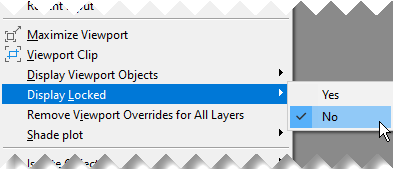
-
Ribbon > Layout tab > Layout Viewports panel > Lock (flyout) > Lock
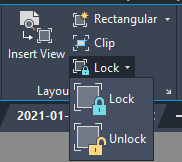
-
Properties palette > Misc section > Display Locked > Yes

-
Tip: The location/size/zoom of the viewport can be changed at any time. But the annotation scale might need to be updated accordingly as described in the following section.
 Pick the best annotation scale for the viewport #anno
Pick the best annotation scale for the viewport #anno
-
Select the viewport and read its current scale in the lower right corner of the window. The example in the image below has a scale of 0.318718.

- Use the tables on the Structures template annotation scales page to find the closest annotation scale for the current viewport scale.
Requirement: Be sure to use the correct table for your drawing template (i.e. Layout & Geo or Details templates)
For the current scale in the example above, the annotation scale is between 3.00 and 4.00. We can try both scales to see which looks better, or create a custom scale between 3.00 and 4.00. For this example we will use the scale 3.00.

-
Change the viewport to use the annotation scale (3.00 in this example) by using the drop-down arrow next to the current viewport scale. You can also use the arrow in the center of the viewport to change the annotation scale.
Requirement: Make sure the viewport is unlocked first.
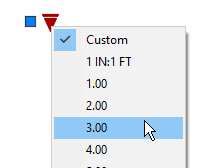
-
Switch to Model Space (MODEL) and make sure the annotation scale matches your viewport annotation scale. All annotations drawn going forward will use this scale.
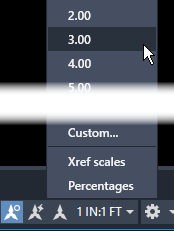
-
If you already have annotation in the detail shown in the viewport, you can update the scale by selecting the details and using the Fix annotation scales tool.
Info:If the Fix Annotation Scales tool does not work, make sure the elements are set to Annotative in the properties palette.
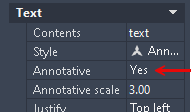
Warning: The Fix Annotation Scales tool works only on annotative objects, not blocks or symbols. They will need to be resized or reinserted when the scale changes.
Tip: If there are no annotations visible in the viewport (or if some annotations are missing) toggle the Annotation Visibility button (ANNOALLVISIBLE 1). When the annotation visibility is set to 0 any annotative elements that don't match the viewport annotation scale will be hidden.

 Set up multiple viewports with different scales on one sheet layout
Set up multiple viewports with different scales on one sheet layout
Viewports can be copied and pasted to create more viewports with different scales on one layout sheet. The location, size, and zoom/annotation scale can be changed based on steps provided in the previous sections.
Info: Using Insert View from either the Layout or Layout Tools tabs on the ribbon to create a new viewport will not create the viewport overrides required for the two structures mask layers. Copying the viewport instead of creating a new viewport from scratch will also copy the viewport overrides. For more information, see the Sheet templates #sheet section of the Structures Drawing Templates page.
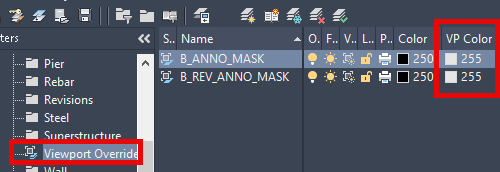
 Maximize the viewport size
Maximize the viewport size
The Structures palette provides a block to make a viewport that matches the available space in the structures sheet borders.
- Open a sheet layout.
- Insert the Outline block.
- Structures tool palette > Misc. palette > Viewport section > Outline
Set the scale to 1/12 with S 1/12

Tip: Scale the outline block slightly smaller than 1/12 to be able to more easily select the viewport outline (instead of the sheet border it is on top of). For example, use a scale of 10/121 or 0.082 instead.
Click the bottom left corner of the sheet border (or slightly inside the sheet border) to place the block.
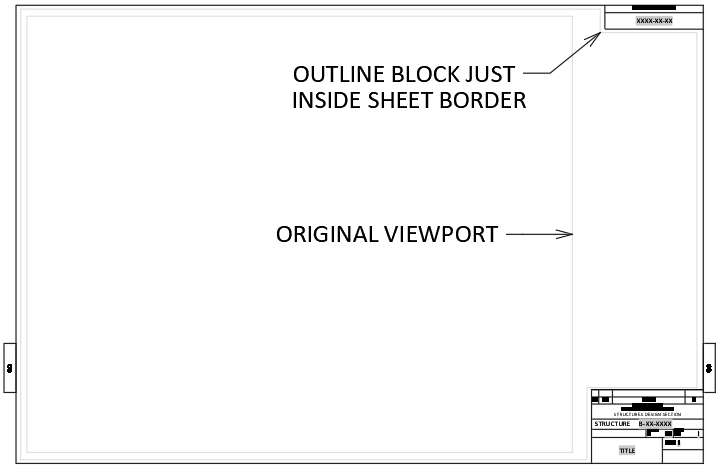
- Select the original viewport (not the outline block).
-
Ribbon > Layout tab > Layout Viewports panel > Clip Alternatively, VPCLIP
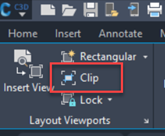
- Select the outline block placed earlier to change the shape of the viewport.
 Locate the viewports in model space
Locate the viewports in model space
There are two ways to show the viewport extents in model space:
- Trace the viewport outline and move it to model space with CHSPACE
- Open a sheet layout with the viewport you want to locate in model space.
- Use a polyline to trace the outline of the viewport.
- CHSPACE
- Select the polyline and Enter
- If there are more than one viewport on the sheet layout, select the viewport you traced and Enter
Tip: If the viewport was maximized following the steps in the previous section, the viewport outline block can be placed again and moved to model space.
- Draw where you want the viewport to be in Model space and then adjust the viewport.
pln-prod-struct-sht-01.mp4 04:15
- In model space, use a rectangle or polyline to draw a border around the detail you intend to put in a viewport. Tip: Alternatively, use the viewport outline block to define the border. The scale you need for the viewport outline block will match the annotation scale you need for the detail/viewport.
- Open the sheet layout that should contain the detail.
- Using the existing viewport or a new, copied viewport:
- Double click inside the viewport to enter it.
- ZE to fit all details in the viewport.
Requirement: Make sure the viewport is unlocked before changing the scale.
- Set the annotative scale for the viewport as described in an earlier section. PAN and/or Resize the viewport boundary until the correct detail is shown, and then lock the viewport to prevent accidental changes.
- Manipulate the viewport outline so it matches the boundary drawn earlier.
- Move the viewport to the desired location in the sheet layout.
 Rotating view in viewport
Rotating view in viewport
Use the Sheet Tools - Align Viewport sheet tool to rotate the viewport.
Requirement: The model space coordinate system needs to be set to WCS before using this tool. For more information see the Structures coordinate systems page.